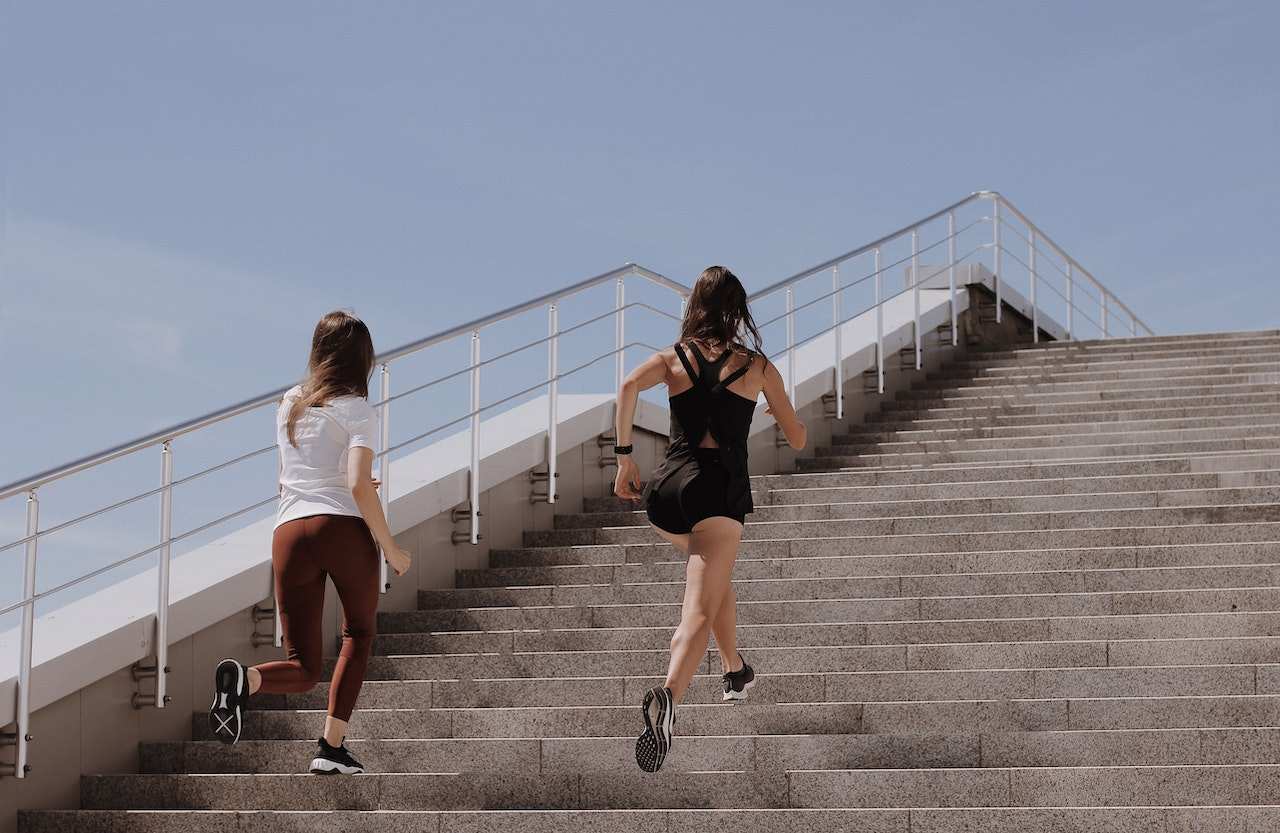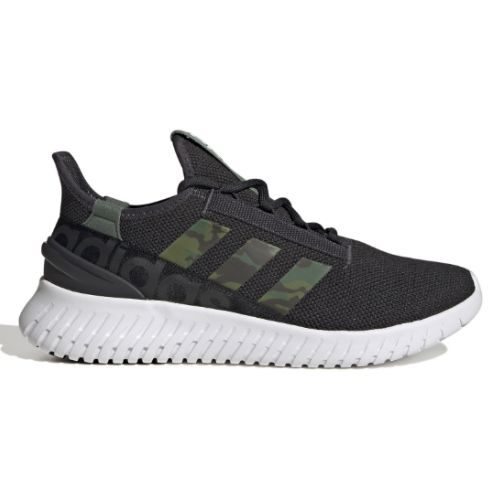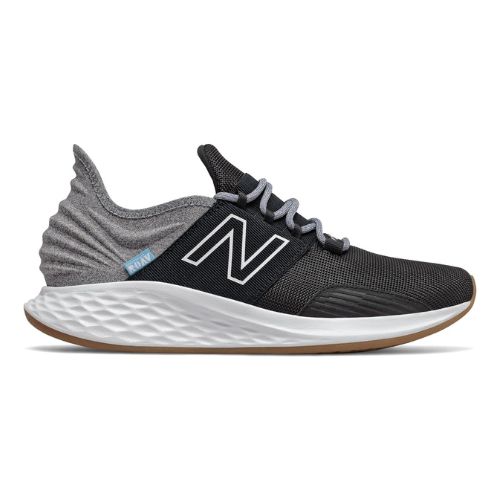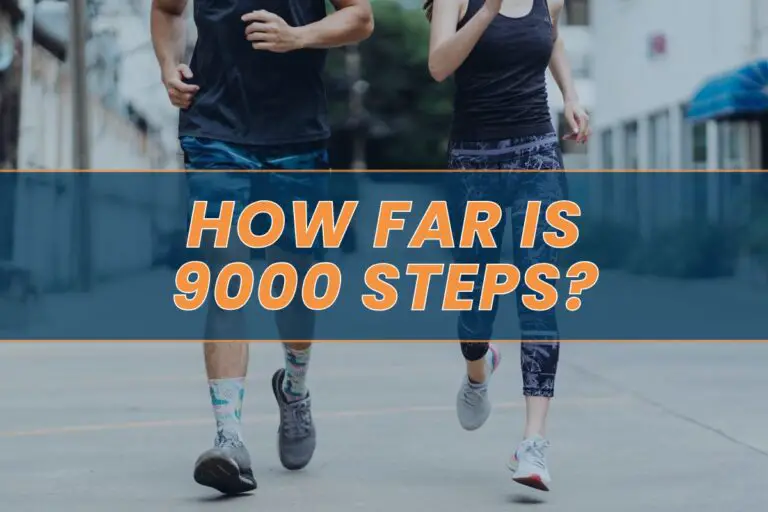Running Shoes vs. Sneakers: How to Choose the Right Footwear
Reviewed by: Sergii Putsov (PhD in Sport Science)
Choosing between running shoes vs. sneakers? When it comes to fitness activities, having a good pair of shoes is essential for proper performance and support. Did you know that running shoes are specifically designed differently from sneakers? It can be tricky to choose the right shoe when you don’t know the difference between sneakers and running shoes.
In this blog post, we will compare running shoes and sneakers to help you better understand what is best suited for your activities. Let’s dive in!
Running Shoes vs. Sneakers: Which one is better?
Choosing between running shoes vs. sneakers may be tricky. Running shoes are specifically designed and constructed to take on the high-impact forces generated by running, offering a combination of comfort, cushioning and support. Sneakers are designed for multi-purpose activities such as walking or light jogging as they prioritize style over performance.
What Are Running Shoes?
Running shoes provide crucial protection to runners and are a key part of an effective running program. They should be selected with serious consideration, as different types can offer varying levels of cushioning, stability and support based on individual needs.
Runners who plan to participate in races or intensive training programs should invest in quality running shoes that suit their foot type for maximum performance, comfort and injury prevention.
What Are Sneakers?
What are considered sneakers? Sneakers, which are also known as athletic shoes, trainers, tennis shoes, sports shoes and casual shoes. They can often be worn for both sporting activities and leisure. They’re versatile and lightweight enough to move with every stride – making them a comfortable choice for people who need freedom of movement in their choices of footwear. But are sneakers running shoes?
Meanwhile the extra cushioning on sneakers makes it ideal for running errands or grabbing brunch with friends after an active day, they may not suit running. Let’s discuss the sneakers and running shoes differences.
Running Shoes vs. Sneakers: Main Difference

Running shoes are optimized for specific functions while sneakers tend to be designed with general purposes in mind. Let’s discuss the details:
1. Performance
Both running shoes and sneakers are similar in design, but they serve different purposes. Running shoes are specifically designed and constructed to take on the high-impact forces generated by running whereas ordinary sneakers may not provide enough balance for the same activity level.
The performance of a runner can be greatly influenced by correct footwear selection that will enable them to perform better allowing more comfort and prevention from injuries. Research has reported that runners who wear regular sneakers will rely less on their muscles. Besides, they increase impact loading rates, reduce stride length, and have an overall higher risk of muscular-skeletal injury compared with other types of sports footwear.
2. Cushioning and Support
Cushioning and support are two essential elements of good running shoes that can play a major role in enhancing foot health and preventing injuries. Usually, sneakers have weak cushioning and lack support. At the same time, stability running shoes are designed to actively reduce pronation by limiting excess rotation of the leg, while regular sneakers don’t have this feature.
Running shoes feature individual arch supports, cushioning along key areas, an optimal fit for feet of different size and shape.
Subscribe to Our Running Newsletter!
Get free running tips from renowned professional athletes and discounts from top-notch brands.
3. Heel Height
When it comes to running shoes and sneakers, the heel height of a shoe is an important factor in determining its performance and comfort. The stack height refers to the amount of material that separates your foot from the ground. This can be anything from ultra-thin foam or rubber layers to thicker materials such as air bubble technology.
Sneakers usually feature various heel heights, from low to extra-high, as a design feature. That’s why they don’t fit runners’ needs. On the opposite, running shoes have heel height options that are made especially for different types of running loads and feet.
It’s important to get a proper fit with snugness around both the midfoot and heel while still allowing enough room for toes.
Here’s a brief summary of difference between running shoes and sneakers in a table:
| Criteria | Running shoes | Sneakers |
|---|---|---|
| Used for | Running | Walking |
| Foot movement | Forward movement | Side-to-side movement |
| Flexibility of the sole | High | Medium |
| Heel drop | Medium/High | Low/Medium |
| Midsole | Soft | Soft |
| Shock absorption | Medium/High | Low/Medium |
| Balance | High | Low |
| Stack height | High | Medium/High |
| Support | High | Low |
| Breathability | High | Medium/Low |
| Material | Mesh | Mesh/Fabric/Leather |
Running shoes and sneakers are two different types of footwear that have many similarities, but also distinct differences. And those differences play a major role in choosing proper footwear for running.
Sneakers vs Running Shoes: Summary
When choosing footwear, it is important to differentiate between running shoes and sneakers. Let’s summarize the pros and cons of both types of footwear:
Pros and Cons of Running Shoes
Running shoes provide excellent cushioning and support during vigorous physical activity. The design of running shoes is based on biomechanics research that indicates they can reduce the impact force to the body while improving performance.
The main advantages of running shoes include improved energy return during a stride and greater comfort due to additional cushioning for shock absorption. They offer superior stability compared to sneakers with thinner soles and a secure grip in wet weather due to their more robust features.

Pro Tip:
However, wearing overly cushioned running shoes can put extra strain on the Achilles tendon and calves muscles if they have too much heel-to-toe drop or lack flexibility. It can result in injury overtime.
Pros and Cons of Sneakers
Sneakers can be a great option for casual walkers or those engaging in low-intensity activities like gardening. However, when it comes to rigorous physical activity such as running, there are important advantages and disadvantages that must be taken into account.
The biggest pro associated with using sneakers is their versatility – they can usually handle light basic workouts as well as everyday wear by offering cushioned comfort and breathability.
On the downside, these adaptations may not always provide enough support for more intense exercises over long distances.

Pro Tip:
The shortage of foot support could increase chances of injuries over time if wearing the wrong footwear. It leaves your feet vulnerable, causing fatigue quicker due to too much pronation or supination.
Our Recommendation on Running Shoes
Best Running Shoe
The lightweight of these running shoes build enhances performance while prioritizing foot well-being. The elevated heel height adds protection, countering prolonged shock absorption issues from intense activities like athletics and cardio workouts.
Pros:
- Stylish comfort with Cloudfoam cushioning.
- Breathable knit upper for ventilation.
- Efficient performance and heel shock absorption.
Cons:
- Limited for challenging terrains.
- Not tailored for peak performance.
For those who are looking for a comfortable idea for running shoes, the Adidas Men’s Kaptir 2.0 Running Shoe has been engineered to provide stylish comfort and breathable material.
This shoe includes a fashionable knit upper and Cloudfoam midsole that provides superior cushioning with every step. Lighter in weight than traditional designs, these running shoes offer all runners an efficient performance while still being kind to their feet.
On top of this is great heel height which helps prevent worsening shock absorption over time caused by activities such as athletics events or cardio exercises like jogging and interval training sessions.
Our Recommendation on Sneakers
Best Classic Sneaker
New Balance Men’s Fresh Foam Roav V1
These shoes offers style and versatility in one. With Fresh Foam cushioning and NDurance technology, it delivers comfort, durability, and stability for energetic runs. The breathable mesh upper ensures all-day foot comfort through excellent ventilation.
Pros:
- Fresh Foam cushioning provides comfort and pleasant wearing.
- NDurance tech enhances durability, traction, and flexibility.
- Breathable mesh upper ensures all-day ventilation.
Cons:
- Limited specialty features for specialized activities or sports.
- More focus on style, than functionality for specialized sports.
New Balance Men’s Fresh Foam Roav V1 is the ultimate choice for people who need stylish sneakers, but still versatile footwear. This sneaker combines on-trend style with performance features to give you a shoe that looks as good as it feels.
Its Fresh Foam cushioning offers plush feel while its NDurance technology maximizes durability, traction, and flexibility so your jogs remain light and energizing yet stable. The lightweight breathable mesh upper ensures maximum ventilation during active days giving you foot comfort all day long.
FAQs about Running Shoes vs. Sneakers
Are Sneakers Good for Running?
The right pair of running shoes should provide adequate cushioning as well as support to your feet while reducing injury risk. Typical sneakers which lack cushioning may cause fatigue and joint pain due to their lessened arch support when used in an intensive activity like running.
Is It Ok to Wear Running Shoes as Sneakers?
Wearing running shoes for daily use is possible, however there are certain factors to consider before making the switch. Features such as cushioning, stability, flexibility and fit have an impact on how good they will feel and perform while jogging, walking or standing all day.
Final Thoughts on Running Shoes vs. Sneakers
When exploring your options for running shoes or sneakers, it’s important to consider the type of performance and support you need. Running shoes are specifically designed to absorb shock and provide cushioning over long distances, while offering flexibility for quick movements.
Sneakers on the other hand offer a more casual fit that is suitable for walking. The right choice will depend on your individual needs – whether you’re running marathons, or just going out – there is a footwear option out there to meet all of your needs.
If done correctly, picking an appropriate pair between running shoes vs. sneakers doesn’t have to be confusing after all – they both have advantages depending on what activity you are planning.
What footwear do you prefer for running? Please share your experience in the comments below.
Also read:
- Is An 8 Minute Mile Good
- Is a 6 Minute Mile Good
- Cross Country VS Track
- Running Without Socks
- Beans for Runners
- 8 Week 10K Training Plan
- Best Trail Running Poles
References:
- Can the “Appropriate” Footwear Prevent Injury in Leisure-Time Running? Evidence Versus Beliefs // Journal of Athletic Training: https://meridian.allenpress.com/jat/article/55/12/1215/446284/Can-the-Appropriate-Footwear-Prevent-Injury-in
- Factors Influencing Runner’s Choices of Footwear // Frontiers Media: https://www.frontiersin.org/articles/10.3389/fspor.2022.829514/full
- Motion-Control Shoes Reduce the Risk of Pronation-Related Pathologies in Recreational Runners: A Secondary Analysis of a Randomized Controlled Trial // JOSPT: https://www.jospt.org/doi/10.2519/jospt.2021.9710
- What are the perceptions of runners and healthcare professionals on footwear and running injury risk? // BMJ Open Sport & Exercise Medicine: https://bmjopensem.bmj.com/content/6/1/e000767
- Highly Cushioned Shoes Improve Running Performance in Both the Absence and Presence of Muscle Damage // lww Medicine & Science in Sports & Exercise: https://journals.lww.com/acsm-msse/fulltext/2022/04000/highly_cushioned_shoes_improve_running_performance.10.aspx
If you have any questions or suggestions, you can contact us via email – [email protected]









Finally I found some useful material that helped me. Thank you very much!
I have separate shoes for running and just for every day. My Nike running shoes are soft and comfortable, you can run and walk in them. However, I use them for running and training. For every day, I prefer Converse shoes.